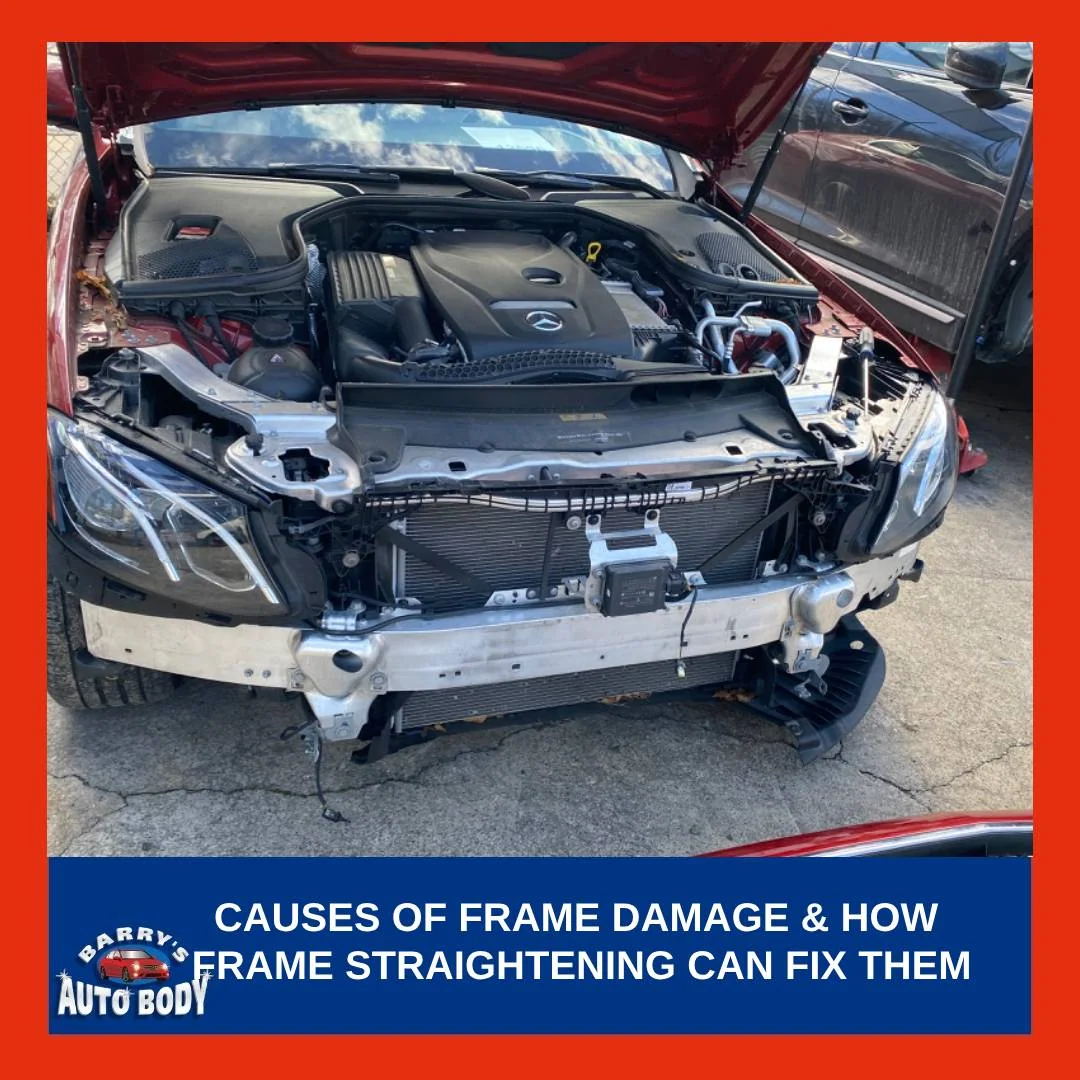The frame of your car is its backbone, providing crucial structural support and ensuring safety. Frame damage is a severe issue that can compromise your vehicle’s integrity, leading to various problems affecting safety and drivability. Fortunately, frame straightening can help restore your car’s frame to its original condition. This blog post will explore five common causes of frame damage and how frame straightening can address them.
Your car’s frame is integral to its structure, safety, and performance. When the frame is damaged, it can lead to severe issues that impact the vehicle’s safety, handling, and longevity. Understanding the causes of frame damage and how frame straightening can help maintain your car’s integrity.
Car Accidents and Collisions
Car accidents and collisions are the most common causes of frame damage. When your vehicle is involved in a collision, the impact force can distort or bend the frame. Different types of collisions can have varying effects:
Rear-end Collisions: These can cause the frame to crumple at the back, leading to misalignment.
Side-Impact Collisions: These impacts can cause significant bending or twisting of the frame on the affected side.
Head-on Collisions: These can lead to severe front-end damage, affecting the entire frame structure.
Crumple zones, designed to absorb impact, often lead to visible frame damage in these scenarios.
Frame straightening can be an effective solution for collision damage. Here’s how it generally works:
Professional Assessment: It’s important to have a professional assess the damage. They can use specialized tools to measure the frame and identify the extent of the damage.
Straightening Process: Hydraulic machines can be used to apply precise pressure to straighten the frame back to its original shape. This process requires skilled technicians to ensure accuracy.
Alignment Checks: After straightening, an alignment check can ensure that all frame parts are correctly positioned.
It’s advisable to seek professional help with this process, as improper repairs can lead to further issues.
Hitting Potholes or Curbs
Hitting a pothole or curb can cause significant damage to your car’s frame. The impact can bend or misalign the frame, particularly if the pothole is large or the curb is hit at high speed. The suspension system and tires are also affected, which can indirectly lead to frame damage.
Addressing frame damage from potholes or curbs involves several steps:
Visual Inspection: Look for any visible signs of damage, such as misaligned body panels or uneven gaps.
Professional Alignment Check: It’s a good idea to have a professional check your vehicle’s alignment. Misalignment can be a sign of frame damage.
Straightening and Repairs: If frame damage is detected, straightening the frame and repairing any associated suspension or alignment issues can be beneficial. Regular alignment checks and careful driving can help prevent such damage.
Rust and Corrosion
Rust and corrosion can weaken the structural integrity of your car’s frame over time. Exposure to moisture, salt, and chemicals can cause rust to develop, especially in areas where paint or protective coatings are damaged.
Dealing with rust and corrosion involves:
Regular Inspections: Check for rust regularly, particularly in areas prone to moisture accumulation.
Treatment and Repair: Treating rust early can prevent extensive damage. This can include sanding down rusted areas and applying rust inhibitors.
Professional Assessment: A professional assessment is crucial for severe rust. They can determine whether frame straightening is necessary and perform any required repairs.
Preventive measures, such as applying rust-proof coatings and keeping the car clean, can help minimize the risk of rust and corrosion.
Severe Weather Conditions
Severe weather conditions, such as heavy snow, ice, and extreme heat, can contribute to frame damage. Salt used on roads in winter can accelerate rusting, while extreme heat can weaken the frame material over time.
Managing weather-related frame damage can involve:
Seasonal Inspections: Regular inspections during and after severe weather seasons can help detect early signs of damage.
Preventive Maintenance: Applying rust-proof coatings and washing the car regularly can help prevent rust from road salt.
Professional Repairs: If damage is detected, professional frame straightening and repairs can restore the frame’s integrity.
Being proactive with maintenance can help mitigate the impact of severe weather on your car’s frame.
Manufacturing Defects
Though less common, manufacturing defects can also damage frames. These defects include poor welding, weak materials, or incorrect assembly.
Addressing manufacturing defects involves:
Identifying Defects: Being aware of recalls and known issues with your car model can help you identify potential defects.
Professional Diagnosis: A professional diagnosis can confirm the issue if you suspect a manufacturing defect.
Repair and Straightening: Correcting defects may involve straightening the frame and reinforcing weak areas. It’s advisable to follow the manufacturer’s guidelines and seek professional repairs.
Staying informed about recalls and manufacturer advisories can help you address defects early.
Recognizing and addressing the causes of frame damage is crucial for maintaining your vehicle’s safety, performance, and longevity. By staying vigilant and taking prompt action when you notice any warning signs, you can prevent minor issues from escalating into major problems.
If you suspect frame damage, consider seeking professional help to restore your vehicle’s structural integrity and performance. Regular inspections, professional assessments, and timely repairs can ensure a safe and enjoyable driving experience.

